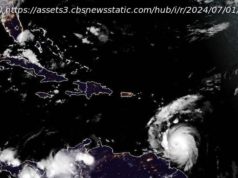Some key takeaways from the tragedy, including the fateful warnings from submersible industry experts about Titan’s safety and why it and the company that built and operated it, OceanGate, weren’t subject to regulations.
The fate of OceanGate’s Titanic tourist submersible, Titan, and the five people aboard, is no longer a mystery. On Thursday, the U.S. Coast Guard confirmed that a remotely operated submersible vehicle had found a field of debris from the experimental craft not far from the infamous shipwreck it had been diving to visit, indicating the Titan had suffered a “catastrophic implosion.” All aboard were killed: three paid passengers — British billionaire Hamish Harding, British Pakistani businessman Shahzada Dawood and Dawood’s teenage son, Suleman — along with a well-respected Titanic expert, Paul-Henri Nargeolet, and OceanGate Inc. CEO Stockton Rush. Below are some key takeaways from the reporting and commentary on the tragedy thus far.
.
We still don’t know exactly why the Titan imploded.
But most industry experts are suggesting there was some fatal flaw in the unusual and experimental design of the vessel, which had a unique pressure hull constructed with carbon fiber and titanium and was the first-ever deep-water submersible that could hold five people. It’s not yet clear if or when investigators will be able to determine the specific cause of the disaster. It’s not even clear who will lead the investigation.
‘Titanic’ director James Cameron on the ‘catastrophic implosion’ of Titan submersible: “I’m struck by the similarity of the Titanic disaster itself, where the captain was repeatedly warned about ice ahead of his ship and yet he steamed at full speed into an ice field.” pic.twitter.com/vO8JkCXS5f— ABC News (@ABC) June 22, 2023
.
The safety of the Titan submersible had been repeatedly called into question, and OceanGate did not heed requests to submit to oversight.
Soon after the news of the Titan’s disappearance, it became clear that many in the manned submersible industry had long feared OceanGate’s innovative vessel was not safe.
In a 2018, lawyers for OceanGate’s former director of marine operations, David Lochridge, alleged in a court filing that he was fired after calling on the company to conduct additional safety testing on the Titan and warning of “potential dangers to passengers of the Titan as the submersible reached extreme depths.” One of the issues Lockridge highlighted was the Titan’s viewport not being certified to work beyond a depth of 1,300 meters.
That same year, several submersible experts confronted OceanGate CEO Stockton Rush over the design of the Titan at a conference of crewed-underwater-vehicle specialists in New Orleans, submersible expert Karl Stanley told the New York Times.
Soon after the conference, 38 members of the Marine Technology Society, a manned-underwater-vehicle-industry group, wrote — but reportedly did not send — a letter to Rush expressing their concerns. “Our apprehension is that the current experimental approach adopted by OceanGate could result in negative outcomes (from minor to catastrophic) that would have serious consequences for everyone in the industry,” they wrote, alleging that the company’s marketing materials were misleading and insisting Rush obtain an independent safety certification for the submersible before accepting passengers.






